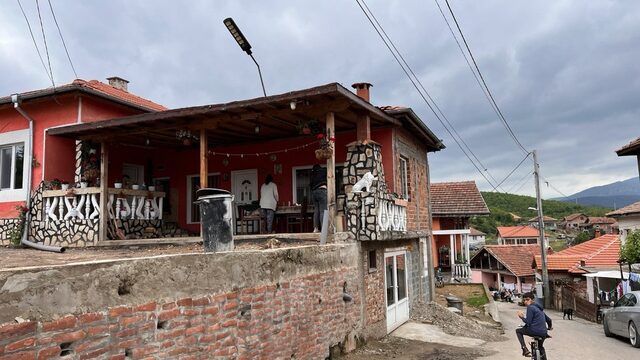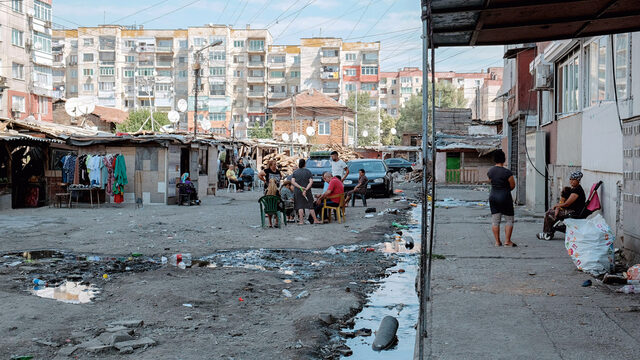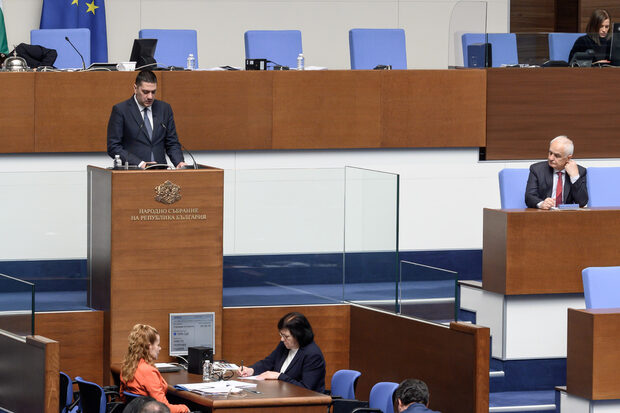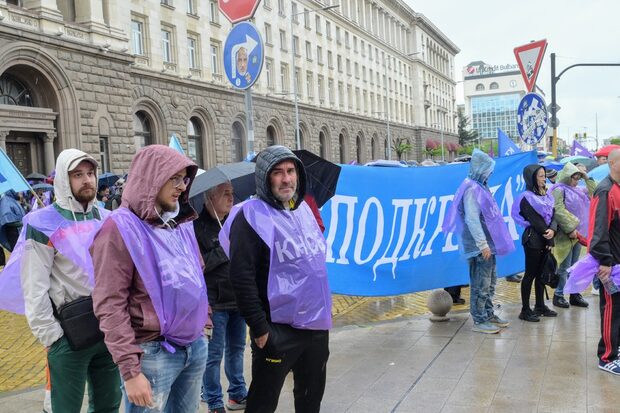In the inner part of the Southeastern city of Sliven, not far from the center, where Pirin Street passes the mosque and goes straight to the factories at the other end, Google maps has no coverage. The streets appear on the digital map, but you can't "virtually" walk on them because they are a white spot for the all-seeing eyes of the web giant. It is between these streets where the Nadezhda ("Hope") Roma ghetto of the city is located.
For many Bulgarians the Roma ghettos in the cities are also white spots on the map. They know nothing about them beyond their names and their rough location. Without any research, one can bet that the vast majority of the residents of Sofia or Plovdiv have never been to their respective ghettoes - Fakulteta and Stolipinovo. This is understandable - these places are very different from the rest of the city, there are often no urban plans, municipal services, large shops or even streets.
However, it is this division, in which a part of the residents of a city have almost no idea how the marginalized others live that explains why almost no one understood how a large swath of these people simply disappeared.

Go West, life is peaceful there
With the opening of the European markets for the free movement of people, large groups of Roma gradually, and finally en masse, migrated to the West. There are no precise figures on this, but empirical observations by researchers show that between 40 and 50% of the population moved there.
While the domestic and international media often focuses on a small fraction of the Roma people - those engaging in illegal activities - they missed a bigger story - a substantial working class group, suffering from discrimination and stereotyping in Bulgaria, found employment and income abroad. With the income they gain, they drive an invisible economy in the Roma neighborhoods that brings capital into the country and lifts another section of Roma out of poverty. Returnees from abroad in turn demand more and better municipal services and thus slowly but surely change the face of the neighborhoods and the way they connect to the cities.
300,000 fewer people
As these places are also black boxes for the municipalities and the national institutions, information about what is happening there is hard to find. Their spatial plans do not correspond to the reality on the ground and therefore it is not clear when and what constructions appeared; address registrations are inadequate, therefore the census cannot capture them; there are no bank branches there the list goes on.
The only hard numbers are those from the census. According to the National Statistics Institute (NSI), in 2011 there were 325,000 people who self-identified as Roma and 588,000 who self-identified as Turks. By 2021, the former are already 266,000 and the latter - 508,000.
This data comes with some caveats. Firstly, external migration is terribly difficult to capture - NSI does equalization accounts every decade to be able to record how many people have left Bulgaria, and does not disaggregate this data by ethnicity. Even if someone isn't in the country, they can come back, get counted, or have their relatives count them.
Second, the NSI has long failed to adequately count the Roma community, says Prof. Nadezhda Ilieva, head of the Economic and Social Geography Section at the National Institute of Geophysics, Geodesy and Geography at the Bulgarian Academy of Sciences. Partly this is a problem of how the census is carried out, but also because many Roma define themselves as Bulgarians or Turks because of the stigma. According to her calculations, which take into account natural growth and demographic trends, the Roma ethnic group is, in fact, twice as large - topping 700,000 people.

Regardless of the precise number, it is safe to assume that more than 40% of the Roma live abroad, says Prof Ilieva. That would mean 280-300,000 people. "According to our research in municipalities, among health mediators and neighborhoods, more than 40% of Roma work outside the country. Only about 3-4% rely on welfare - and that is already an overestimation. 60% of households rely on remittances," she concludes. Her team is currently working on a project sponsored by the Research Fund to map all Roma neighborhoods in Bulgaria.
According to their research, by the end of the 1990s about 1.5% of Roma families declared that they had gone abroad, in 2007 - 3-4%, in 2010 - 10%, and the current research shows a jump to over 40%. This coincides precisely with the opening of European markets in 2011-2012 and is many times higher than the average for Bulgaria - according to NSI data, around 300-340,000 people migrated in the period 2011-2020, which is less than 10% of the working population.
In the inner part of the Southeastern city of Sliven, not far from the center, where Pirin Street passes the mosque and goes straight to the factories at the other end, Google maps has no coverage. The streets appear on the digital map, but you can't "virtually" walk on them because they are a white spot for the all-seeing eyes of the web giant. It is between these streets where the Nadezhda ("Hope") Roma ghetto of the city is located.












